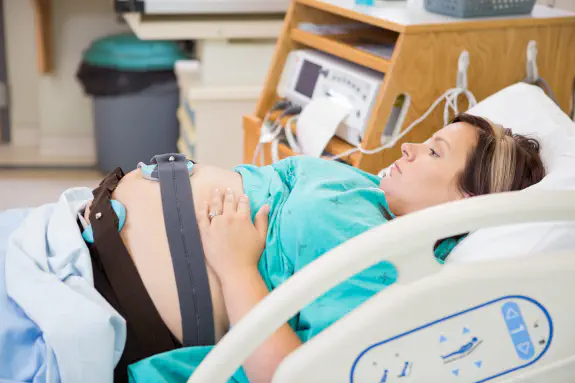Sex and Gender-based Analysis of this topic
Definition
Labour induction is defined as the number of delivering women whose labour was induced by medical or surgical means before the natural onset of labour. The rate is expressed as a proportion of all women giving birth in the same time frame and place[1]. Labour can be induced by either pharmacological or surgical means and is associated with increased complications compared to spontaneous labour [1]. The rate of labour induction rose steadily in Canada from 1991 until 2001, reaching a rate of 20% before decreasing to 19% in 2004/2005 [1]. The rate in British Columbia has followed a similar trend and was 21% in 2006/2007 [2].
Sex Issues
The induction of labour through surgical or medical means carries some risks, including prolonged labour, chorioamnionitis, and uterine hyperstimulation[3]. Induced labour has also been shown to increase the length of hospital stays and the rate of Caesarean section births [4]. These risks are typically weighed against the maternal risks of continuing with the pregnancy [5]. For women who have had previous Caesarian sections, chances of uterine rupture associated with labour induction are remote, but have potentially severe consequences [6].
Gender Issues
The rate of women choosing to induce labour when it is not medically necessary is increasing [7]. These decisions may be undertaken for convenience to the mother, family, or doctor [8]. This pressure seems to come from the side of women who are concerned over the health of the infant and doctors who are concerned about timing and possible litigation [8].
Diversity
The rate of labour induction varies significantly across Canadian provinces and territories. In 2001, the lowest rate of 3% occurred in Nunavut, while the highest rate of 23% occurred in Alberta [1]. Labour induction rates vary across British Columbia’s Health Service Delivery Areas. In 2006/2007, the highest rate was 26% in Fraser Health Authority’s Fraser North and Kootenay Boundary region and the lowest rate was 18% in Northern Health Authority’s Northern Interior region [9].
Critique
The practice of labour induction has increased dramatically over the past 20 years and has reached a stable rate within the last five years. As labour induction has been shown to carry some maternal health complications, medical professionals should provide women with all of the information concerning the risks and potential benefits to allow them to make informed decisions. The recent trend towards elective labour induction without medical rationale is cause for concern and should be addressed both through maternal education and in-depth research into long- and short-term health consequences.
